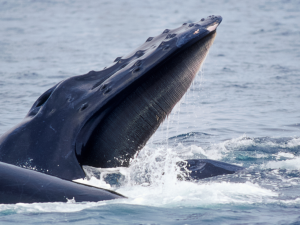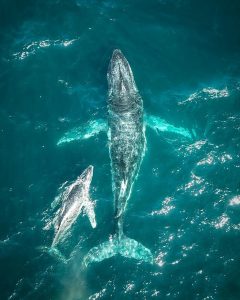The Marine Mammal team for the Gulf of Mexico Marine Assessment Program for Protected Species (GoMMAPPS) just published their report on at-sea and aerial surveys that took place in the U.S. Gulf of Mexico between 2017-2018.
Under the Marine Mammal Protection Act (MMPA) and the Endangered Species Act (ESA), the National Marine Fisheries Service (NMFS) is charged with assessing the population status of protected species within US waters. These Acts require periodic assessment of population status relative to management and recovery benchmarks and evaluation of threats to species and populations due to anthropogenic activities. The Bureau of Ocean Energy Management (BOEM) and the Bureau of Safety and Environmental Enforcement (BSEE) require distribution and abundance information for marine protected species, including marine mammals, to assess the potential impacts of activities related to the development of offshore energy (e.g., oil and gas) and marine mineral resources as considered in federal consultations under the ESA, authorizations under the MMPA, and in compliance with other applicable statutes. As part of ESA Section 7, BOEM and BSEE are required to consult with NMFS and/or US Fish and Wildlife Service (USFWS) on listed marine mammal species that may be affected. BOEM, BSEE, NMFS, and USFWS have certain overlapping information needs to inform their assessment of the potential impacts of offshore development of energy and marine mineral resources on protected species in the US Gulf of Mexico (GOM). Therefore, the overall goal of the Gulf of Mexico Marine Assessment Program for Protected Species (GoMMAPPS) as it pertained to marine mammals was to collect broad- scale temporal information on the distribution and abundance of marine mammals in the GOM to inform seasonally- and spatially-explicit density estimates for priority species.
To achieve the main objective of the marine mammal component of GoMMAPPS, to determine the
seasonal distribution and abundance of marine mammals in the NGOM, broad-scale surveys were conducted to collect data during three large vessel surveys of oceanic waters (winter, summer, and
summer-fall) and three aerial surveys of continental shelf waters (winter, summer, and fall). Shipboard and aerial survey data were analysed to estimate the density and overall population size of species encountered within the surveyed regions of the NGOM.
Data collected from GoMMAPPS will provide critical information for addressing uncertainties that are important to decision-making for multiple federal agencies and will support conservation initiatives mandated under the National Environmental Policy Act (NEPA), MMPA, ESA, and other federal statutes (e.g., Oil Pollution Act, Magnuson-Stevens Act, National Marine Sanctuaries Act, etc.).
Read more about the assessments, results and the reports value to guide future activities here.
Source: Rappucci G, Garrison LP, Soldevilla M, Ortega-Ortiz J, Reid J, Aichinger-Dias L, Mullin K, Litz J. 2023. Gulf of Mexico Marine Assessment Program for Protected Species (GoMMAPPS): marine mammals. Volume 1: report. New Orleans (LA): US Department of the Interior, Bureau of Ocean Energy Management. 104 p. Obligation No.: M17PG00013. Report No.: OCS Study BOEM 2023-042.









